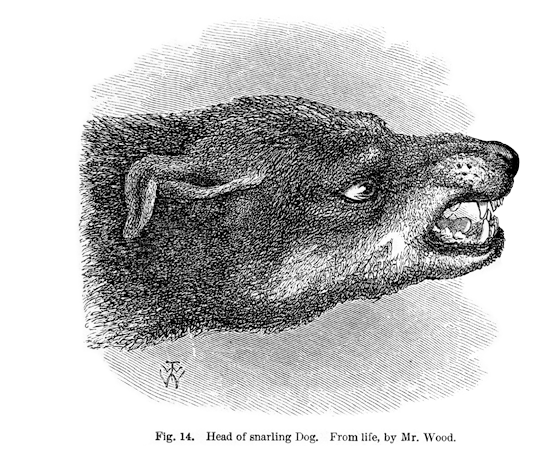Charles Darwin, The Descent of Man and Selection in Relation to Sex, vol. 1 (1871; repr. New York: Appleton & Co., 1873), 64-5.
Ibid., 64.
See the entry “Animism” in the Encyclopaedia Britannica, 11th ed., 1910-1911, 53-5.
For the presence of dogs in Darwin’s texts, see Kay Harel, “It’s Dogged as Does It: A Biography of the Everpresent Canine in Charles Darwin’s Days,” Southwest Review 93, no. 3 (Fall 2008): 368-78.
Herbert Spencer, The Principles of Sociology, vol. 1 (1876; New York: D. Appleton & Co., 1897), 125-33.
Ibid., 127.
Tito Vignoli, Myth and Science: An Essay, (1880; New York: D. Appleton and Co., 1882). For the original Italian edition see Mito e Scienzia (Milan: Dumolard, 1879). For the contemporary German edition see Mythus und Wissenshaft: eine Studie (Leipzig: Brockhaus, 1880). For the young Warburg’s reading of Vignoli see Ernst Gombrich, Aby Warburg: An Intellectual Biography (Chicago: Chicago University Press, 1986), 68-71.
Vignoli, Myth and Science, 162.
Though drawing more from Leibniz than Darwin, a century later Gilles Deleuze would again invoke the example of the “stick” and the dog: “a man has tiptoed up to the dog from behind, when he has raised the instrument in order to strike it then upon the dog’s body.” The impression of “the stick being raised up” makes “the animal always look about” anxiously; “it is the soul that watches out,” with “the animal or animated state par excellence” being “disquiet.” Gilles Deleuze, The Fold: Leibniz and the Baroque, trans. Tom Conley (Minneapolis: University of Minnesota Press, 1993), 56.
Vignoli, Myth and Science, 58-9 and 119.
Ibid., 57.
See the copy of Vignoli’s Mythus und Wissenshaft in the library of the Warburg Institute, p. 50, and Warburg Institute Archive, London (WIA) Zettelkasten (ZK) No. 41 “Aesthetik.”
Figure 14, “Head of Snarling Dog. From life by Mr. Wood,” in Charles Darwin, The Expression of the Emotions in Men and Animals(London: J. Murray, 1872; Chicago: University of Chicago Press, 1965), 117. Citations refer to the 1965 edition. For Warburg’s notes on Darwin’s book, see Warburg Institute Archive (WIA), Zettelkasten (ZK) No. 1, Ausdrukskunde 001/000038-62.
Aby Warburg, “Reise Errinnerungen aus dem Gebiet der Pueblos,” WIA III. 93.4, p. 26. A large section of the same passage is cited in Gombrich, Aby Warburg: An Intellectual Biography (Chicago: University of Chicago Press, 1986), 217-18. An English translation of Warburg’s draft has been published as “A Journey through the Pueblo Region,” in Philippe-Alain Michaud, Aby Warburg and the Image in Motion (Cambridge, Mass: Zone, 2004), 310.
Aby Warburg, Ae.(sthetik), WIA, Zettelkasten (unnumbered) and “Grundlegende Bruchstücke zu einer monistischen Kunstpsychologie,” WIA, III.43.1-3.
Gombrich, Aby Warburg: An Intellectual Biography, 71.
In one of his aesthetic aphorisms written on September 14, 1890, Warburg noted: “Two periods can be distinguished in man’s perception of objects: 1. Anything alive is assumed to be hostile (Alles Lebende wird als feindlich angenommen) and capable of movement and pursuit, so that a position is taken up accordingly 2. Anything alive is examined for the limitation of its movement, law, force. It turns out that man is not only a beast of prey but also a slothful creature.” See WIA, III.43.3, “Grundlegende Bruchstücke,” pp. 39-40; also cited in Gombrich, Aby Warburg: An Intellectual Biography, 76.
Warburg, “Grundlegende Bruchstücke,” WIA, III.43.3, p. 1
For a different view of that polarity, see T.J. Clark, The Sight of Death (New Haven: Yale University Press, 2006), 235-36.
The article is based on material from my book On the Animation of the Inorganic: Art, Architecture, and the Extension of Life, forthcoming by University of Chicago Press in summer 2012.
